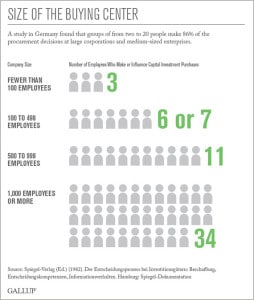Enterprise B2B Buying Decisions Influenced By 34 People
 In a recent LinkedIn Pulse article, “2 Key Trends Make Account Based Marketing necessary today“, I expanded on the idea as to why B2B marketers need to update their approach and underlying technical capabilities. The core idea here is that existing marketing technologies are not adapted to the current trends as to how buyers actually buy. Here’s an exceprt:
In a recent LinkedIn Pulse article, “2 Key Trends Make Account Based Marketing necessary today“, I expanded on the idea as to why B2B marketers need to update their approach and underlying technical capabilities. The core idea here is that existing marketing technologies are not adapted to the current trends as to how buyers actually buy. Here’s an exceprt:
These B2B marketing systems view leads as independent agents acting to solve isolated problems, whereas buyers are increasingly acting as complex buying entities – shifting from individuals to highly organized team evaluations. Consider the situation where four independent leads separately visit your website, once each, and each register and download one piece of content… because marketing systems view this activity as four independent agents acting on their own accord, each of these four actions mean very little. Ultimately, the scoring of these leads will be trivial and none may rise to a point of interest, MQL status. However, when seen in their totality, at the account level, this can represent a very different picture. Consider that these four people are from the same company and are working together as a buying group. Even though they source content independently, they share it and they work with each other to form conclusions and select solution options. In this reality, the four visits and downloads can represent a highly engaged buying decision.
To this point, the data I used estimated the average buying group size to be a little more than 5 players. While the idea of 5 is great and directionally aligns to this point of view I have always had in the back of my mind that averages probably don’t tell the full story. When I saw this report from Gallup it all came together… The answer is that enterprise-class target accounts can have an average of 34 influencers in the buying decision. Wow!
Read more from this Gallup article…
In B2B companies, the definition of a “customer” is elusive: Several decision-makers usually make decisions jointly to purchase products or services. But who are these people?

